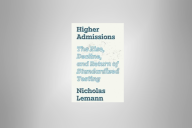You have /5 articles left.
Sign up for a free account or log in.

Drazen Zigic/istock/getty images plus
Undeniably, COVID-19 has impacted the nature of teaching and learning for students, faculty and administrators who support various areas within higher education. According to The Washington Post, “Job losses among instructors have fluctuated wildly since the start of the pandemic. In the spring [2020], instructors with master’s or bachelor’s degrees and part-time educators with some college faced the most layoffs. The pattern suggests these are adjunct instructors.”
Pre-pandemic, the number of part-time instructors within higher education was already on a slight decline in proportion to full-time faculty, a trend that may continue to grow. Yet the number of part-time faculty still tends to outnumber full-time faculty in higher education for a number of reasons. Those include the aging of full-time faculty, an oversupply of qualified potential instructors in many fields, the expansion of community colleges and financial hard times, among others. At Montgomery College, for example, approximately 40 percent of classes are still taught by part-time faculty.
Now, more than ever, as we continue to transition into what we hope to be the post-pandemic era, the goal of higher education institutions should be to ensure that part-time faculty feel valued, recognized, supported and included in college operations. And that should be done thoughtfully. In fact, in July 2020, upon taking on the role of director of the Institute for Part-time Faculty Engagement and Support, which then supported more than 1,500 part-time faculty (PTF), I felt slightly insecure in ways that had little to do with the typical nerves that come with starting a new role. Rather, my worries had more to do with figuring out what adequate support and engagement should look like for each PTF at the college—given the diversity in expectations and motivations for serving at the institution—rather than viewing them as a lump-sum group.
Yes, I had previously served as a department chair and had a pretty solid understanding of the faculty in my area, but I knew that supporting all part-time faculty across the college would be much more demanding. Institutions often invest a lot of energy, time and money in understanding students, as they should. But at the same time, they don’t truly understand the variety of goals and motivations of their part-time faculty, who have played a major role—especially during this pandemic—in supporting their students and institutions.
Montgomery College’s senior vice president of academic affairs, Sanjay Rai, has noted that the objective of the Institute for Part-time Faculty Engagement and Support is to fully engage part-time faculty in the academic fabric of the institution and all student success initiatives. Since its inception, the institute has partnered with other departments within the college in ways that have helped position the needs of part-time faculty more at the forefront during this pandemic, and it will continue to do so moving forward.
Our efforts include, among many others, updating policies and procedures as well as minimizing the number of class cancellations that primarily affect students as well as part-time faculty. Compensation will always rank as a top priority in supporting part-time faculty, especially for those who teach part-time at multiple institutions for a living, which was once my case. During the pandemic, PTF at Montgomery College, for instance, received a 4.5 percent increase in compensation from 2020 to 2021 per an agreement between management and the union. Part-time faculty have also had the opportunity to participate in a number of paid fellowships, including a one-semester sabbatical program recognized as the Dr. Shoenberg Part-time Faculty Fellowship in honor of a former trustee who generously supported the fully paid program.
Based on my personal experience of once having to make a living teaching at three different institutions at the same time and of now serving full-time as the director for the institute, I am able to share three ways that colleges can enhance student success through the support of part-time faculty members.
Be intentional about part-time faculty space. The value and importance of a dedicated space for PTF became clear to me when working part-time at three different places. To be able to get to each campus knowing I had a specific office where I could connect with other part-time instructors, grade assignments, print documents, meet with students and prepare for an upcoming class relieved some of the stress that occurred from all the travel time required to move around to various institutions. Jeffrey J. Selingo observed in “The Future of Faculty Offices” that the lack of PTF-dedicated space for mentoring and interacting with students outside of the classroom “contributes to the growing body of evidence indicat[ing] that the proliferation of adjuncts is having a negative impact on student success and outcomes. A National Bureau of Economic Research study found that a 10 percent increase in part-time faculty positions at public universities results in a nearly 3 percent decline in graduation rates.”
Access to an office can only enhance the faculty-student interactions needed for increased student support and success. Oftentimes, part-time faculty receive whatever office is left, but it’s time for institutions to rethink the ramifications of dismissing the importance of intentional space if they want faculty members to adequately serve their students. Montgomery College has a part-time faculty resource center on each of the three campuses, as well as at our workforce development and continuing education training centers. Those centers are equipped with cubicles, computers, lockers, mailboxes, copy machines, scanners and a mini cafe for PTF.
Expand professional development opportunities. Colleges and universities should consider reallocating funds to meet the needs of part-time faculty when it comes not only to dedicated space but also to professional development. In summer 2020, Montgomery College paid full- and part-time faculty $1,850 through CARES Act funds to complete a summer institute program that provided training on online and other kinds of remote pedagogy—how to use technology, engage students in a virtual environment and more. College leaders recognized the need to ensure that all faculty had the technological tools, extended knowledge and hands-on experience to teach such courses for the upcoming semester.
In summer 2021, the college offered additional paid training with the continued help of the college’s E-Learning, Innovation, and Teaching Excellence (ELITE) professional development department. In support of part-time instructors and recognizing the need for flexibility in workshop offerings, ELITE has started offering additional distance-learning courses as well as ELITE After Dark synchronous virtual workshops that occur between 5 and 8:30 p.m.
Adjunct professor Eric Farwell goes further to contend that now is the time for colleges to reconceptualize professional development opportunities. They allow part-time instructors to incorporate the fact that every PTF may not be able or want to become full-time in academe. He observes, “More money would be nice, but so would practical workshops, networking events and mentoring that could help adjuncts figure out how to transfer skills they’ve gained from teaching college students into a career that makes more sense for them.”
Genuinely invest in part-time faculty. A huge trap that many institutions fall into is believing that they are doing a part-time faculty member a favor by simply hiring them. Undoubtedly, PTF are grateful for the additional minimal income and the opportunity to serve in a capacity that, for many of them, may have been a longtime goal. But it would be naïve to believe that both parties do not have something to gain in the relationship and that student success can be achieved without part-time faculty.
Colleges and universities should also work to understand the long-term goals of their part-time faculty members and provide paths for them to attain those goals within the institution or elsewhere. They can offer support in a number of ways, depending on the institution, but PTF morale is inevitably improved when an institution intentionally offers leadership opportunities or various other forms of recognition and appreciation. In the article “Faculty Morale: A Perspective for Academic Leaders,” Edward Hebert states, “Morale influences faculty behavior, productivity and quality of teaching; ultimately [it] affects student learning and program quality; and is predictive of faculty turnover. It is an often overlooked but worthy challenge for academic leaders.”
Part-time instructors often come to their institutions with distinct experiences related to their field or gained outside higher education—adding to their overall value to the institution and, more so, to students. Colleges and universities should welcome the contributions they can make beyond the classroom in areas such as departmental meetings, collegewide committees, program assessment reviews, search/hiring committees, collegewide participatory governance and more.
Identifying the best plan of action for supporting part-time faculty members will ultimately come from understanding the diversity of those within your current institution. That diversity goes beyond demographic information to understanding the goals, background, motivations and life circumstances of PTF. We can’t support vulnerable students without considering the possibly vulnerable instructors who sometimes share similar complicated life circumstances.
A change in perspective requires leaders to identify how we are addressing the challenges today rather than perceiving the challenges as areas to be addressed after the pandemic or sometime else down the road. As we continue to transition to a post-pandemic world, institutions should apply the same energy and commitment that they do to ensuring student success in their future endeavors to ensuring part-time faculty members in theirs.








